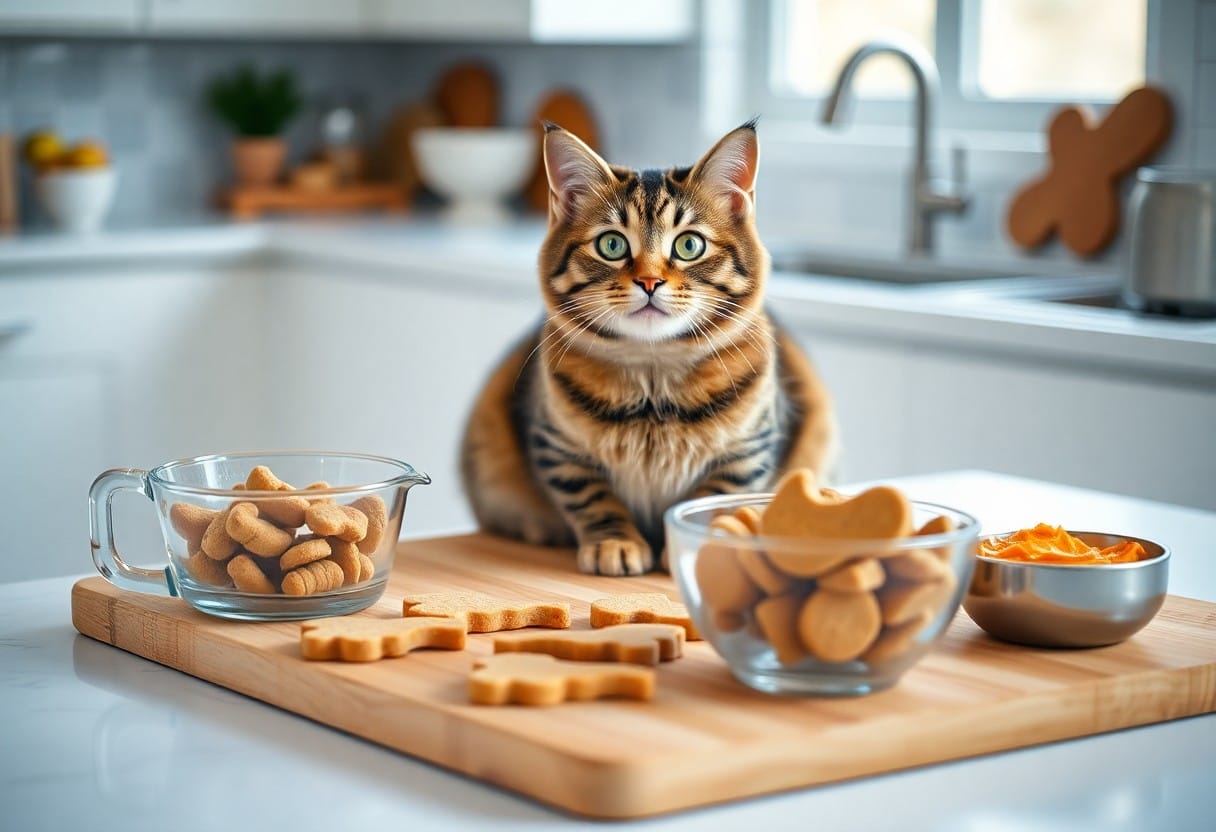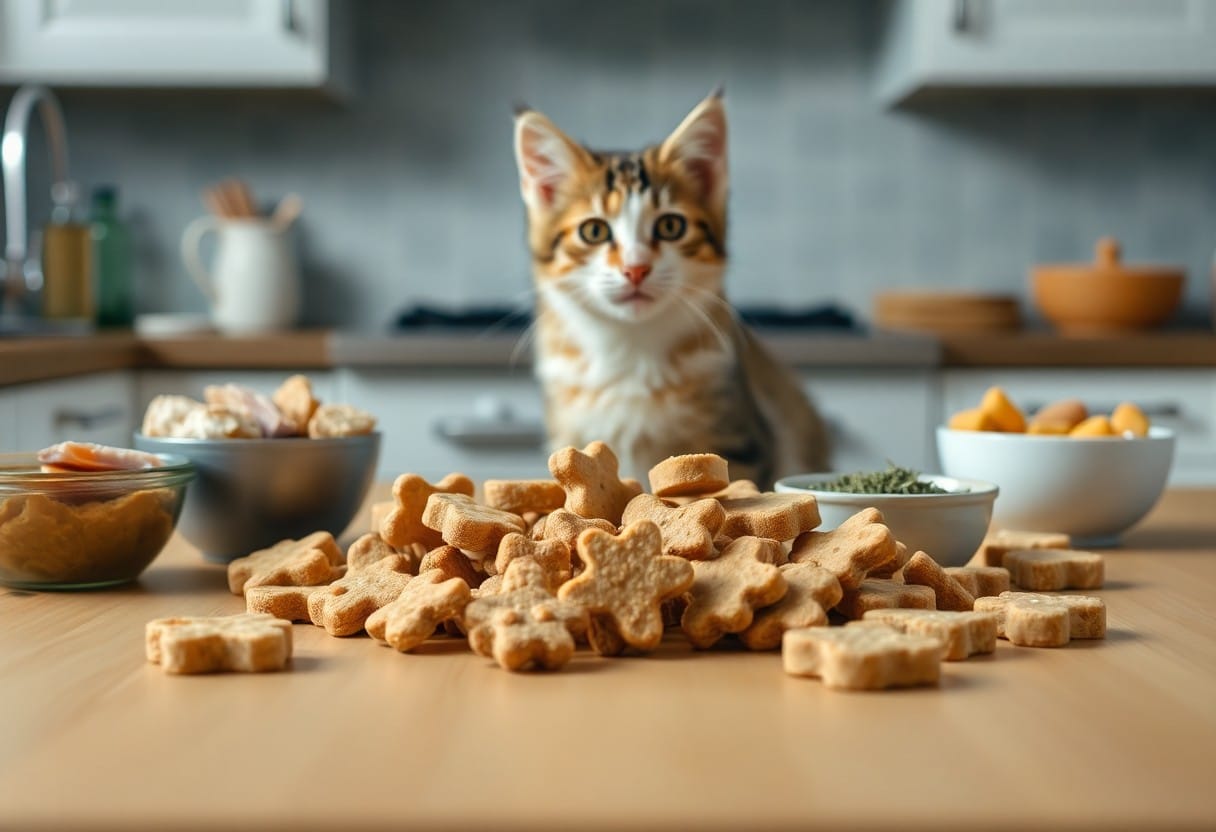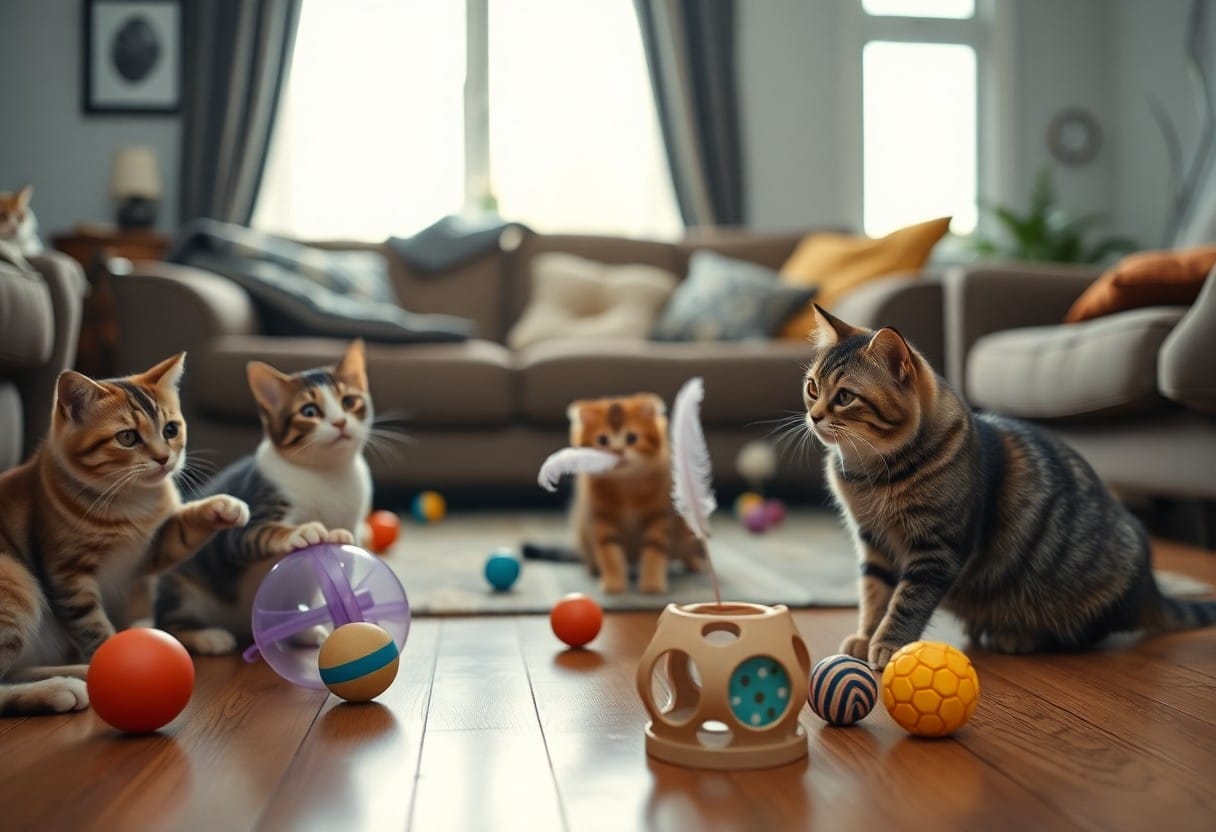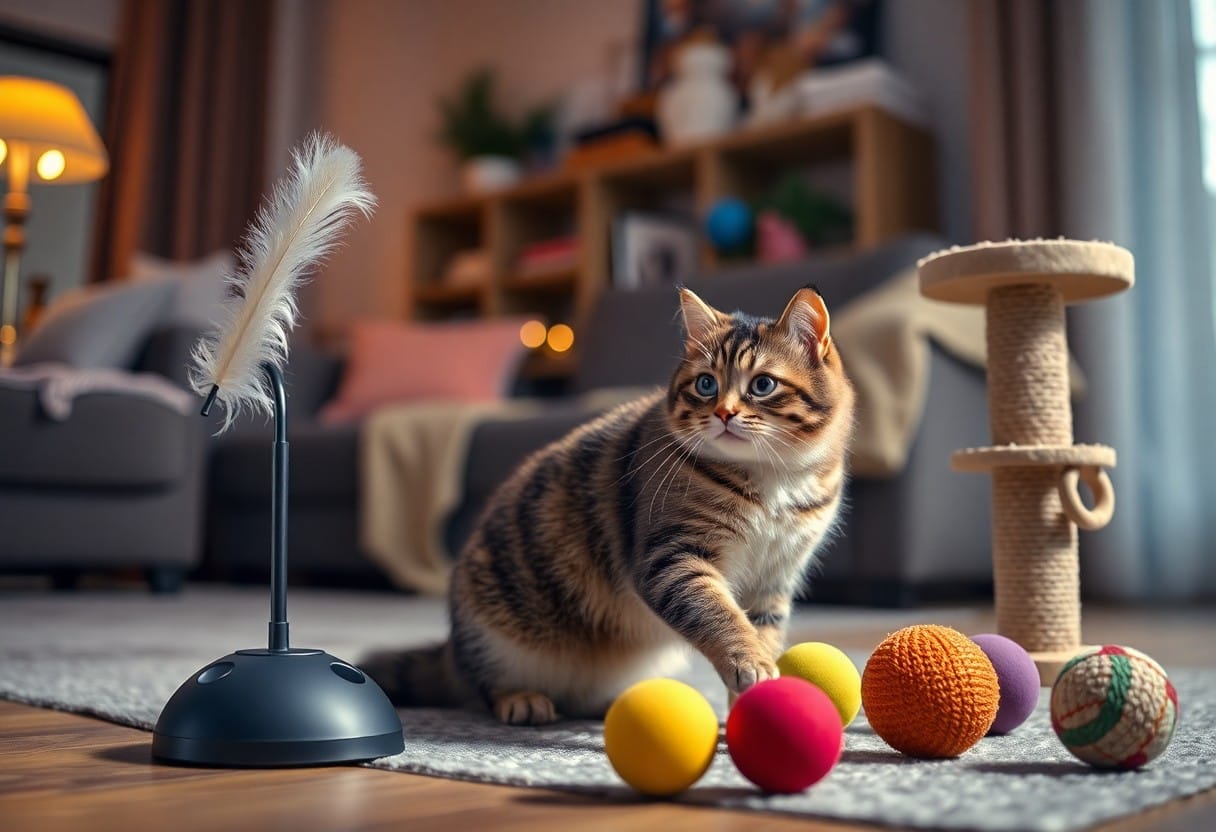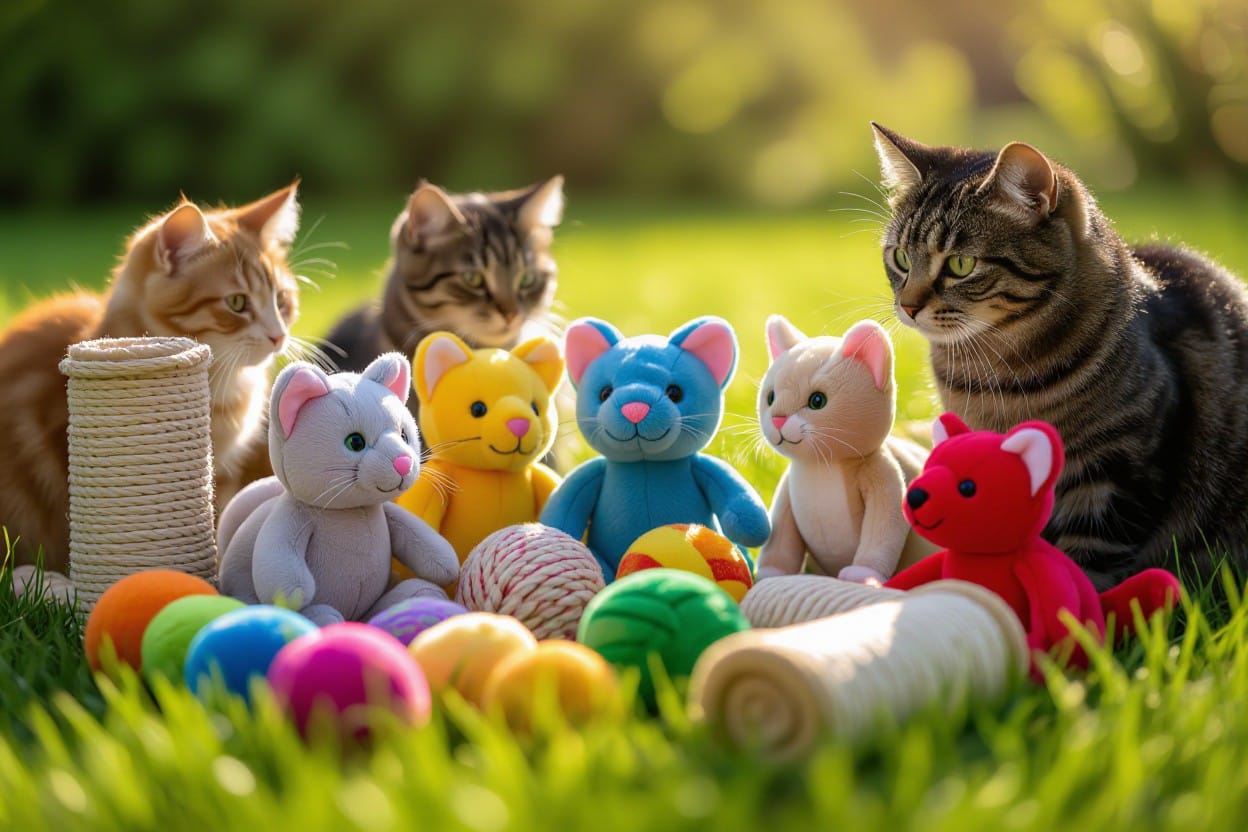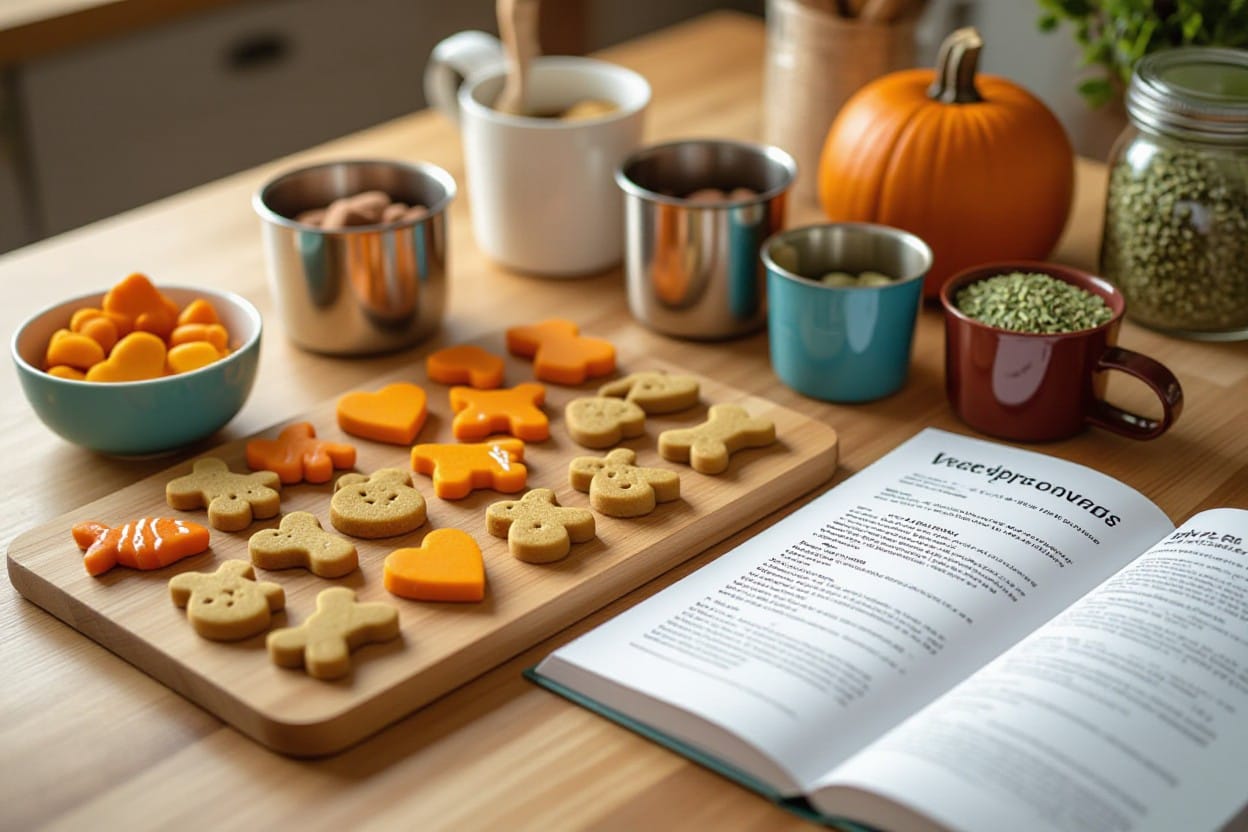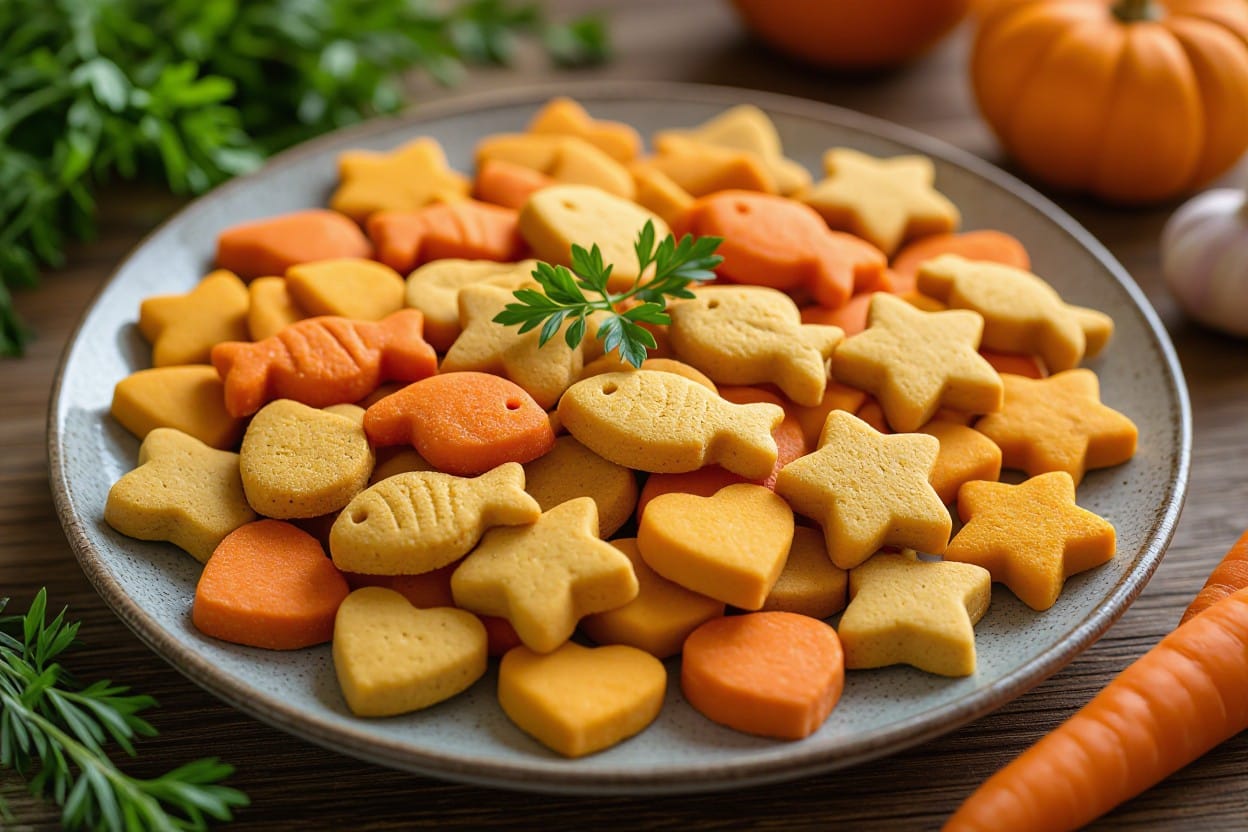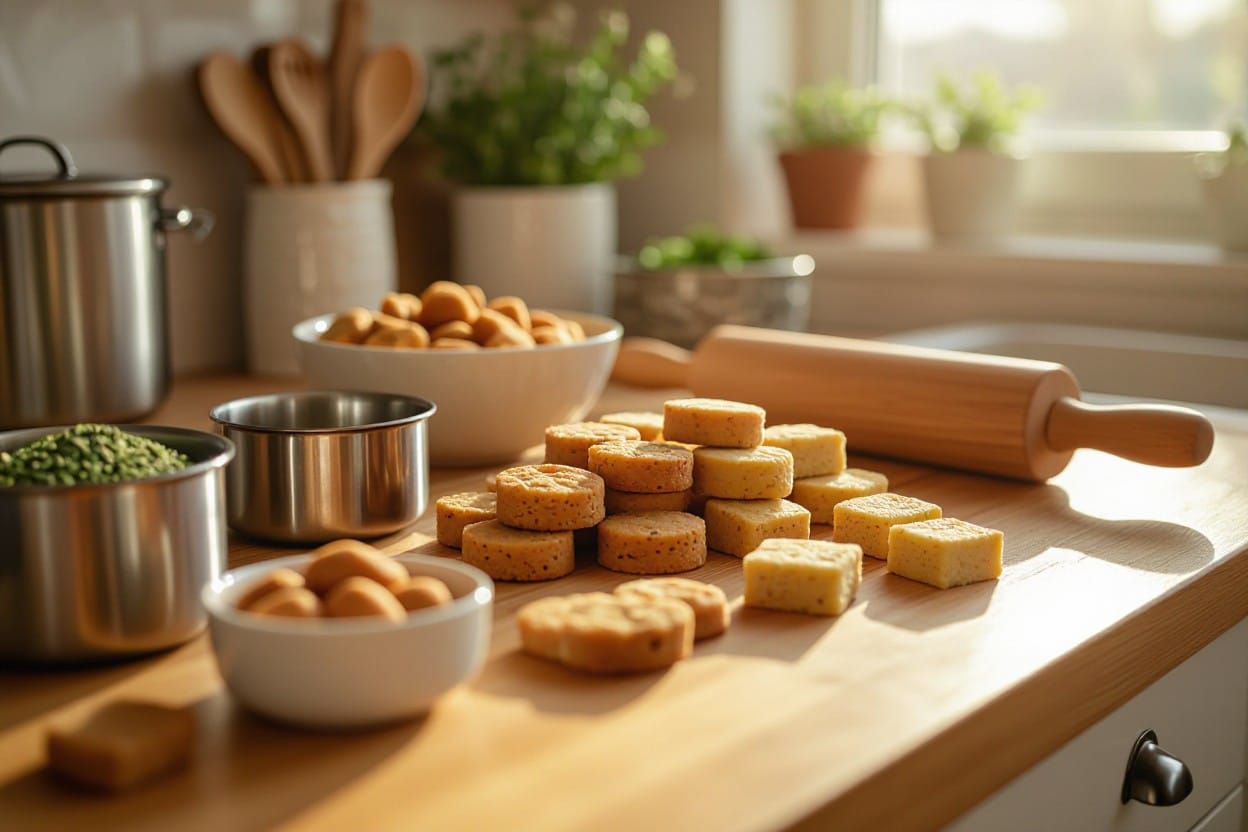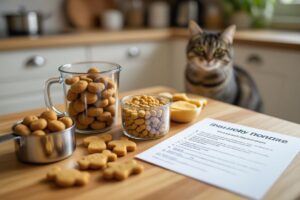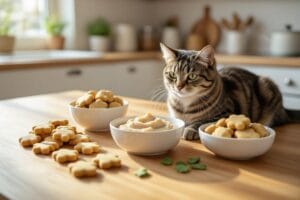With the right homemade treats, you can significantly enhance your cat’s diet and overall well-being. This blog will guide you through nutritious and safe recipes that not only cater to your feline friend’s taste buds but also provide important health benefits. By choosing to create DIY treats, you ensure that only high-quality, wholesome ingredients go into your cat’s snacks, avoiding harmful additives often found in commercial options. Let’s investigate fun and easy recipes that will leave your kitty purring with satisfaction!
Key Takeaways:
- Homemade treats can provide your cat with a healthier alternative to commercial options, ensuring high-quality ingredients and avoiding additives.
- Incorporating a variety of flavors and textures in DIY treats can enhance your cat’s enjoyment and promote a positive mealtime experience.
- Simple recipes using everyday ingredients make it easy for cat owners to create nutritious snacks that support their pet’s overall health and happiness.
Crafting Cat-Friendly Ingredients
Creating delicious and nutritious DIY treats for your cat requires carefully selecting the right ingredients. Start with protein-rich bases such as cooked chicken, turkey, or fish, which serve as a palatable foundation. Add in vegetables like pumpkin or peas, both high in fiber, to aid digestion. Incorporating healthy fats like fish oil or flaxseed oil can enhance coat health. Pay attention to the overall balance of macronutrients to ensure your feline buddy enjoys the benefits of a well-rounded diet.
Essential Nutritional Components
Your cat’s diet needs to be high in protein, with a balanced combination of fats and carbohydrates. Essential amino acids, particularly taurine, are vital for heart health, vision, and digestion, while fatty acids support skin and coat integrity. Including fiber sources, such as pumpkin or sweet potatoes, can help maintain digestive health, making these components key in any homemade treat recipe.
Safe and Toxic Foods to Avoid
While it’s tempting to share your meals with your furry friend, many common foods are harmful or even deadly to cats. Ingredients such as chocolate, onions, garlic, and grapes are on the list of foods you should absolutely avoid. Additionally, raw dough and certain artificial sweeteners like xylitol pose serious risks. Always check for safety before including any new ingredient in your recipes.
Chocolate and caffeine can lead to seizures or even death, while onions and garlic can damage red blood cells, leading to anemia. Grapes and raisins can cause kidney failure, even in small amounts. It’s important to familiarize yourself with these dangers, ensuring your homemade treats are not only delicious but safe for your beloved cat. Always have a list of toxic foods handy and consult your veterinarian if you’re unsure about any specific ingredient.
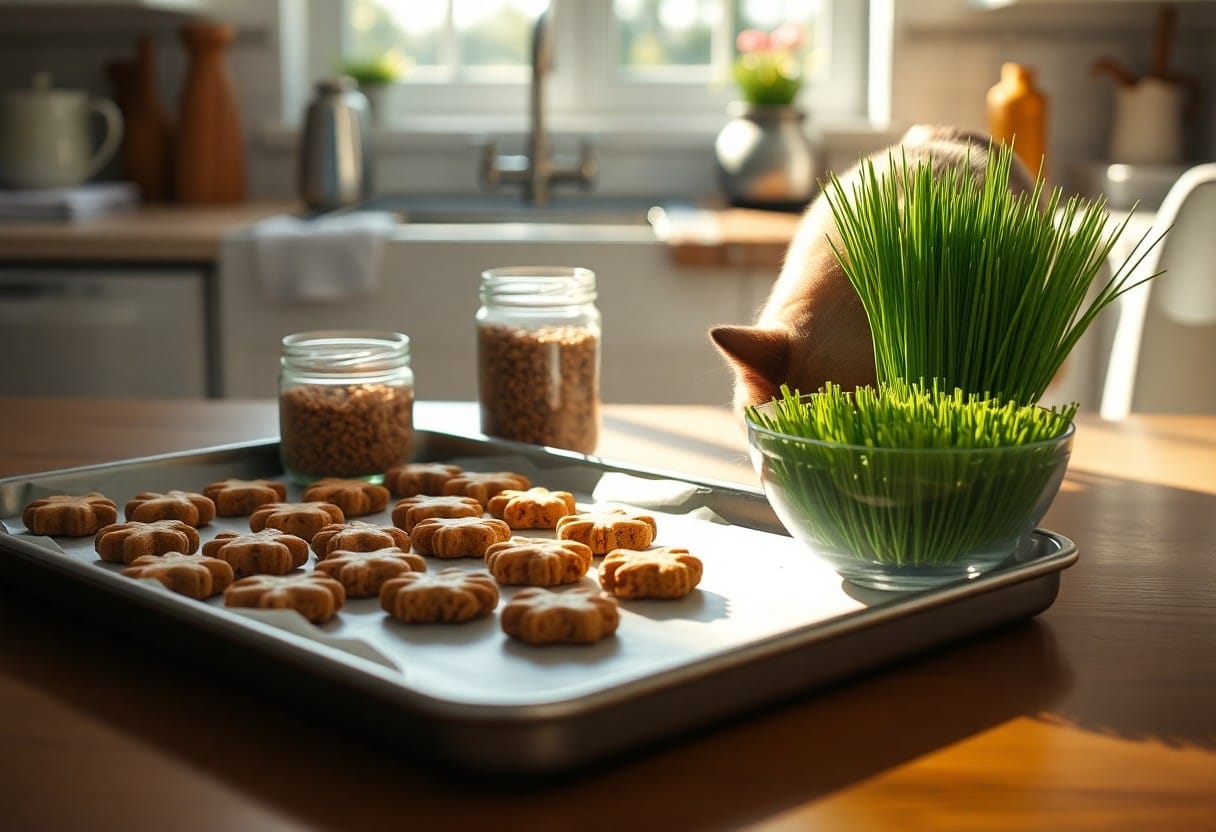
Whipping Up Irresistible Treats
Creating tasty treats for your feline friend can be a simple and rewarding process. With just a few basic ingredients, you can whip up delectable snacks that will have your cat purring with delight. These recipes focus on freshness and flavor, ensuring your kitty enjoys every nibble while receiving the nutrition they need. Let’s probe some easy-to-make treats that are bound to earn you extra cuddles!
Simple Tuna Treats Recipe
This simple recipe transforms everyday canned tuna into a gourmet delight your cat won’t be able to resist! By combining tuna, an egg, and some flour, you can create bite-sized morsels that are rich in protein and flavor. Quick to prepare, you’ll have these savory treats ready in under 30 minutes!
Chicken and Pumpkin Paw-licking Bites
These Chicken and Pumpkin Paw-licking Bites blend lean protein with the nutritional benefits of pumpkin. This recipe offers a good balance of flavor, resulting in crunchy, satisfying treats that are easy for you to make. Your cat will surely appreciate the combination of chicken and pumpkin that supports their digestion.
To make Chicken and Pumpkin Paw-licking Bites, bake finely shredded chicken breast with pureed pumpkin and oat flour until golden. Pumpkin is packed with fiber, making these bites not only delicious but digestive-friendly too. Your cat will love the soft texture inside, while the outside offers a satisfying crunch. These treats can also be a smart way to introduce vegetables into your kitty’s diet!
Homemade Catnip Cookies
Homemade Catnip Cookies are an irresistible indulgence for your feline companion. Combining whole wheat flour, oats, and dried catnip, this recipe creates delightful snacks that will have your cat rolling in ecstasy. These cookies are easy to mix and bake, making them ideal for any cat owner looking to pamper their pet.
The magic of Homemade Catnip Cookies lies in their unique ingredient: catnip, which stimulates most cats and makes playtime more engaging. These cookies not only provide a fun experience; they also pack a punch of nutrition, offering wholesome ingredients that your cat will love. The aroma of catnip fills your kitchen, tempting your cat to drool at the mere scent, and makes these treats a guaranteed hit for playtime rewards!
Customizing Treats to Your Cat’s Preferences
Understanding your cat’s unique tastes is key to creating treats that they’ll adore. Felines can be notoriously picky, so experimenting with different ingredients can yield delightful surprises. Tailor flavors, textures, and even shapes to your cat’s personality—whether they prefer soft, chewy bites or crunchy morsels. Pay attention to reactions and adjust your recipes as needed to ensure each treat hits the purr-fect note!
Flavor Combinations for Picky Eaters
For those discerning feline palates, combining flavors like chicken and pumpkin or tuna and sweet potato often sparks interest. Cats love strong flavors, and incorporating ingredients like cheese or catnip can elevate the appeal. When one flavor doesn’t cut it, mixing in a few options might just create a hit that has your cat begging for more.
Adjusting Recipes for Dietary Needs
Every cat has a unique set of dietary requirements. Some may need low-fat content, others might be on a grain-free diet, or have specific allergies such as to chicken or fish. Always consider these factors and steer clear of ingredients that could cause stomach upset or allergic reactions. Substituting items to align with your cat’s specific needs can keep them both healthy and happy.
For example, if your cat is sensitive to grain, use alternative flours like almond or coconut flour in your treats. If you’re working with a senior cat prone to obesity, consider using lean proteins like turkey instead of higher-fat options. Incorporating veggies like carrots can also add valuable nutrients without packing in too many calories. Always consult your vet for personalized advice to ensure you’re meeting your cat’s individual dietary needs while still making tasty treats!
Tips for Storing and Serving DIY Cat Treats
To keep your homemade treats fresh and tasty for your furry friend, proper storage is vital. Ensure you store them in airtight containers to maintain moisture and avoid spoilage. Depending on the ingredients, some treats may be best refrigerated, while others can be kept at room temperature. Always label your containers with the date of preparation so you can keep track of their freshness. Also, consider portion sizes to prevent overindulgence. This way, you not only provide nutritional value but also enhance your bonding experience. Recognizing signs of spoilage, like odd smells or changes in texture, will keep your kitty safe.
Best Practices for Freshness
For optimal freshness, utilize ingredients that have a longer shelf life, such as oats or dried fish, while avoiding those that can spoil quickly, like dairy. Using vacuum-sealed bags can also extend treat longevity, helping preserve flavor and nutrients. Consider freezing batch-made treats; they thaw quickly and retain valuable nutrients while ensuring freshness lasts weeks longer.
Creative Serving Ideas for Maximum Enjoyment
Serving your homemade treats doesn’t have to be boring! Get creative by using interactive toys or food puzzles that dispense treats, making playtime an engaging experience. You might also try hiding treats around the house to encourage scavenger hunts, stimulating your cat’s hunting instincts. Another fun idea is to create a “treat buffet,” combining different flavors and textures in one sitting, allowing your cat to sample various options. Such variety not only keeps mealtime interesting but also offers your cat a plethora of nutrients in a delightful manner.
Celebrating Your Cat’s Happiness: The Benefits of DIY Treats
Your furry friend deserves nothing but the best, and DIY treats can not only enhance their diet but also amplify their overall happiness. Crafting these homemade goodies allows you to tailor ingredients to meet your cat’s specific needs, avoiding harmful additives found in commercial products. Moreover, as you whip up these tasty morsels, you’re actively celebrating your cat’s unique personality, indulging their taste buds with flavors they love, and fostering a deeper connection that leads to countless happy purrs.
Strengthening Your Bond Through Treat-Making
Getting involved in the creation of your cat’s treats is a wonderful opportunity to strengthen your bond. As you prepare these delicious snacks, your cat will likely become more engaged, following your movements and eagerly awaiting the delightful rewards. This shared experience fosters trust and deepens your relationship, proving that love can truly be measured in homemade culinary delights.
The Joy of Treat Time: Observing Their Reactions
Observing your cat’s reaction to their homemade treats is an incredibly rewarding experience. Their excitement speaks volumes, as they eagerly sniff, paw, and devour the offerings you’ve created. Uplifting their mood can often be as simple as the delighted purring or those adorable zoomies around the house after they taste the first bite. It’s a joyful reminder that your efforts in the kitchen result in more than just a snack; they create moments filled with laughter, love, and happiness.
Watching your cat’s delight when presented with a homemade treat is nothing short of magical. You might find them doing little dances of excitement, making playful chirps, or even giving you a headbutt as a thank you. The sheer joy they express highlights the direct connection between the food they consume and their emotional state. Engaging in this treat time also provides insight into their preferences, helping you refine future recipes to suit their tastes even better. Each positive reaction not only validates your culinary skills but also reinforces the bond you share, making every treat time a celebration of love and companionship.
Conclusion
Conclusively, by creating delicious DIY treats for your feline friend, you not only enhance their diet but also strengthen your bond with them. These recipes allow you to control the ingredients, ensuring your cat receives nutritious snacks tailored to their preferences. As you explore the various options, you’ll find joy in seeing those happy purrs while knowing you’re giving your pet the best. Embrace this opportunity to nourish your cat and enjoy the delightful moments you’ll share together.
Q: What ingredients are commonly used in DIY cat treat recipes?
A: When making homemade cat treats, it’s important to use ingredients that are both tasty and safe for your feline friend. Common ingredients include chicken, turkey, fish, and eggs as these proteins are typically loved by cats. Additionally, whole grains like oats or brown rice can be included for added nutrition. Cats may also enjoy a small amount of catnip, pumpkin puree, or plain yogurt for flavor. Always ensure that the ingredients are fresh and free from harmful additives.
Q: How can I ensure that the DIY treats are healthy for my cat?
A: To create healthy treats, focus on using high-quality ingredients and avoid harmful additives like artificial flavors or preservatives. It’s beneficial to research the nutritional needs of your cat and tailor the recipes accordingly. Include a balance of protein, healthy fats, and limited carbohydrates. You can also consult with your veterinarian to ensure the treats align with your cat’s dietary needs, especially if your cat has any specific health concerns.
Q: How often can I give my cat homemade treats without overfeeding?
A: Homemade treats should be given in moderation to prevent overfeeding. A general guideline is to limit treats to no more than 10% of your cat’s daily caloric intake. This allows for the enjoyment of treats while maintaining a balanced diet. It’s a good idea to consider the overall diet and adjust meal portions accordingly. Additionally, monitor your cat’s weight and overall health to ensure they remain fit and active.
